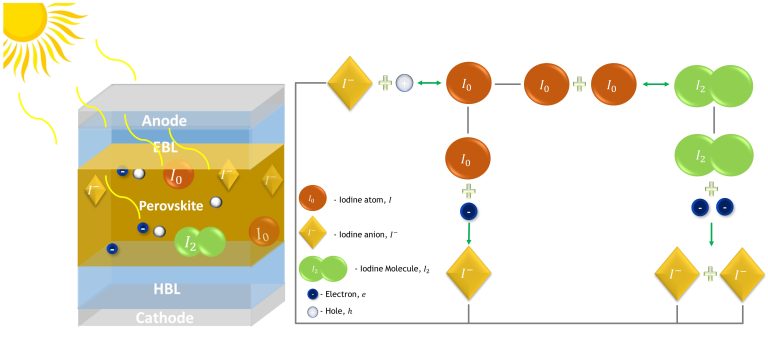The simplicity of the production of solar cells made of perovskites allows them to be integrated over silicon solar cells, thus achieving a significant improvement in the utilization of solar energy and speeding up their application in the production of green energy

Researchers at Viterbi's Faculty of Electrical and Computer Engineering presented for the first time an internal degradation mechanism that impairs the stability of perovskite-based solar cells - cells that are expected to be integrated into silicon solar cells and later also as light, semi-transparent cells for a variety of other applications.
The research, led by Doctoral student Sapir Biton and Prof. Nir Tesler, was published in the prestigious journal Energy & Environmental Science. His findings are expected to accelerate the use of perovskites in energy conversion devices and thus dramatically increase the efficiency of existing silicon cells. The perovskites are materials characterized by unique properties and high efficiency in the conversion of light energy into electricity. These materials are cheaper than silicone as well as flexible, light and transparent. That is why they are considered excellent candidates for the creation of laser devices, photo-electrodes, light-emitting diodes and more, and especially solar cells.
Due to these advantages, research groups and companies are working to develop perovskite-based solar cells.
Solar cells are devices that convert the sun's energy into electrical energy - non-degradable green energy. Adding perovskite cells to the arsenal of solar cells will allow a much wider deployment of solar cells and their application on different surfaces including windows, cars and clothes - a change that will expand the human use of solar energy and the artificial light around us.
The main problem faced by companies that develop these cells is the instability of the perovskite. in their article in Energy & Environmental ScienceThe Technion researchers present the reasons for this instability, which impairs the efficiency of perovskite-based devices. One of the main reasons for that instability is the migration of ions (electrically charged atoms) from the perovskite crystal to the rest of the device. Another reason is reactions of these ions with other charges. Exposure to light, which is of course required in solar cells, even accelerates the migration of the perovskite ions in the device and thus gradually damages its performance already in the first hours of its operation.
The article by the Technion researchers presents for the first time a study that examines, through simulations, devices developed in the semiconductor industry and adds to them the effect of the ions and reactions that take place in the device under different physical conditions. Beaton and Prof. Tessler are not satisfied with describing the mechanism of the device's deterioration, but offer an outline for stopping it. The containment of ion migration is achieved through controlled control over the energy levels of the materials that make up the device.
The research was supported by the Ministry of Innovation, Science and Technology; European Union (M-ERA.NET grants); Edlis Foundation through the Grand Energy Program at the Technion; and the Ohlendorf Minerva Center at the Technion.
Sapir Biton is an Ariane de Rothschild Scholar - a scholarship on behalf of the Rothschild-Caesarea Foundation for outstanding doctoral students.
for the article in Energy & Environmental click here
More of the topic in Hayadan:
- What limits the energy efficiency of a new type of solar cell?
- The Technion researchers discovered that trapping light in thin layers of iron oxide ("rust") can lead to the decomposition of water and the creation of solar fuels
- The rise of renewable energy
- swallow the sun
- Research predicts that nanotechnology will significantly increase the efficiency of the next generation of solar cells
